So you glance at your aquarium only to see a small army of snails marching across the glass? Or maybe you’ve noticed your once vibrant plants looking a little chewed up? If so, you’re not alone. Many shrimp keepers are in a similar predicament, dealing with an unexpected snail invasion. But don’t worry, we’ve got your back.
The key to getting rid of snails in your aquarium involves a combination of manual removal, traps, and careful management of your tank’s environment.
As a fellow shrimp keeper, I’ve had my fair share of run-ins with these little gastropods. They seem to appear out of nowhere, multiplying faster than you can say “snail invasion”. One day, you spot a single snail leisurely making its way across your tank. The next, you’re dealing with a full-blown snail party.
Over the years, I’ve tried everything from manual removal to introducing snail-eating fish. I’ve even dabbled with chemical treatments, although I quickly realized that these can do more harm than good. It’s been a journey of trial and error, but after a decade of shrimp keeping, I’ve finally got a handle on the snail situation.
In this guide, I’ll share the strategies that have worked for me and some tips to prevent future snail invasions. So, buckle up, fellow shrimp keepers. It’s time to take back control of our tanks.
Some Types of Snails
There are many types of aquarium snails, but some are more commonly considered pest snails than others. Here are a few of the most common aquarium snails:
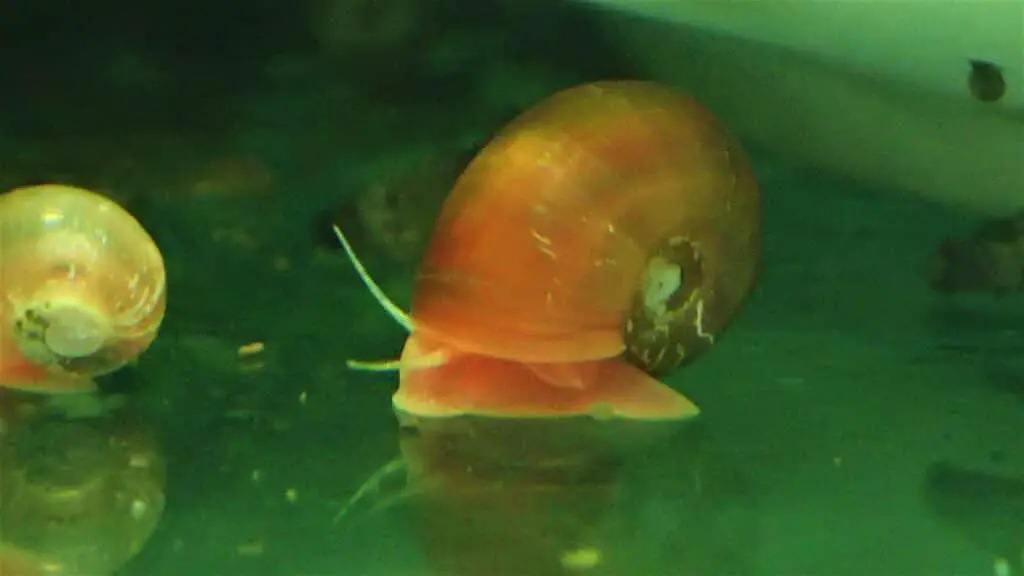
Ramshorn Snails
Ramshorn snails are a type of freshwater snail that are commonly found in aquariums and ponds. These snails are known for their distinctive, spiral-shaped shells that resemble a ram’s horn. Ramshorn snails are members of the Planorbidae family, which includes other species of snails with similar shells.
One of the most unique aspects of Ramshorn snails is their ability to reproduce rapidly. These snails are hermaphroditic, meaning that each individual snail has both male and female reproductive organs.
This allows them to mate with any other Ramshorn snail they encounter, which can quickly lead to a population explosion if left unchecked.
Ramshorn snails are typically considered to be beneficial to aquariums and ponds because they help to clean up debris and algae. They are also known to eat decaying plant matter and leftover fish food , which can help to prevent harmful bacterial growth.
, which can help to prevent harmful bacterial growth.
However, if the population of Ramshorn snails becomes too large, they can start to become a nuisance, as they can damage plants and overpopulate the tank.
In terms of care, Ramshorn snails are relatively low-maintenance. They can survive in a wide range of water conditions and do not require a specialized diet. However, it is important to ensure that the tank is kept clean and free of harmful chemicals, as Ramshorn snails are sensitive to pollution.

Malaysian Trumpet Snails
Malaysian Trumpet Snails (MTS) are a type of freshwater snail that are commonly found in aquariums and ponds. These snails are named for their distinctive, trumpet-shaped shells and are often used as a natural method of cleaning and maintaining aquariums.
MTS are known for their ability to burrow into substrate, which makes them helpful in maintaining the quality of aquarium soil. As they burrow, they churn the substrate, preventing the formation of anaerobic pockets which can create harmful gases. This helps to maintain good water quality, which is essential for healthy fish and plant growth.
Another benefit of MTS is their ability to reproduce quickly. They are prolific breeders and can rapidly populate a tank if left unchecked. However, they are not considered a nuisance species, as they tend to stay buried in the substrate and are not very visible.
In terms of care, MTS are relatively low-maintenance. They are able to survive in a wide range of water conditions and do not require a specialized diet. However, it is important to monitor their population and ensure that they do not overpopulate the tank, as this can lead to issues with water quality.

Bladder Snails
Bladder snails are a type of freshwater snail that are commonly found in aquariums and ponds. They are named for their small, bladder-like shells and are often considered to be a beneficial addition to an aquarium ecosystem.
One of the main benefits of bladder snails is their ability to clean and maintain aquariums. They are known to consume leftover fish food, algae, and decaying plant matter, which helps to prevent the growth of harmful bacteria and maintain good water quality.
Bladder snails are also known for their ability to reproduce quickly. They are hermaphroditic, meaning that each individual snail has both male and female reproductive organs. This allows them to mate with any other bladder snail they encounter, which can quickly lead to a population explosion if left unchecked.
However, bladder snails are not considered to be a nuisance species, as they tend to stay hidden in the substrate and do not significantly impact the overall ecosystem.
In terms of care, bladder snails are relatively low-maintenance. They are able to survive in a wide range of water conditions and do not require a specialized diet. However, it is important to monitor their population and ensure that they do not overpopulate the tank, as this can lead to issues with water quality.
Pros and Cons of Removing Aquarium Snails
Now that we’ve discussed some common aquarium snail pests, let’s discuss the pros and cons of removing them:
Pros
- Removing snails can help to prevent damage to plants and decorations in your aquarium.
- Removing snails can help to reduce the risk of diseases and parasites in your aquarium.
- Removing snails can help to prevent the overpopulation of your aquarium, which can cause a variety of problems.
Cons
- Removing snails can be time-consuming and require effort on your part.
- Some methods of removing snails, such as chemicals, can harm other aquatic life in your tank.
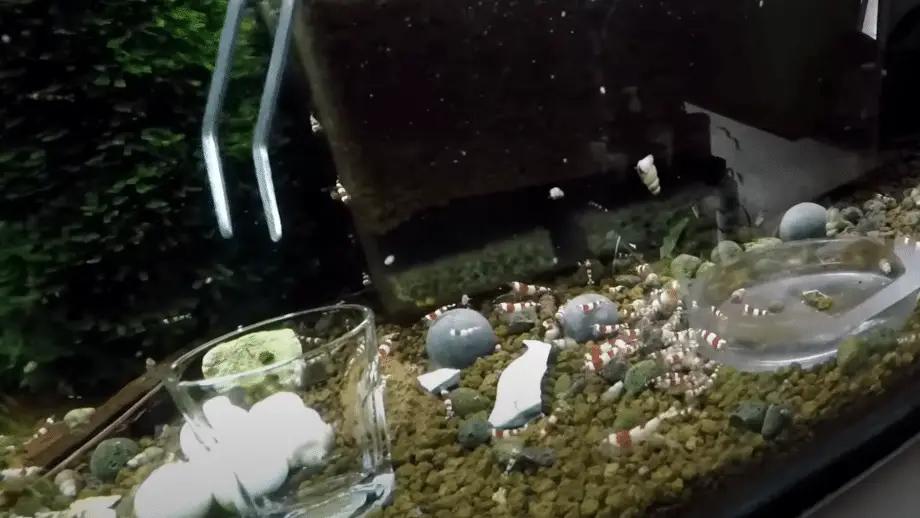
Methods for Removing & Reducing Snails In Your Fish Tanks
Now that we’ve discussed some common aquarium snail pests and the pros and cons of removing them, let’s discuss some effective methods for removing aquarium snails:
1. Manually Remove Aquariums Snails
Manually removing snails is one of the simplest ways to get rid of them from your aquarium. It is especially useful for small infestations or for targeting specific areas where snails are concentrated.
You can use a small net or your hand to manually remove snails from your aquarium. It is important to be gentle when handling the snails to avoid harming them. Start by observing your aquarium and locating areas where snails are congregating.
Carefully scoop the snails out of the tank with the net or your hand and place them in a separate container.
If you are using your hands to remove snails, be sure to thoroughly wash your hands and arms before and after handling the snails. This is to prevent any contamination from your hands or arms from entering the tank and potentially harming your aquatic pets.
Manually removing snails is most effective for small infestations. For larger infestations, it may not be feasible to remove all of the snails by hand. However, manual removal can be combined with other strategies such as traps and chemical treatments to effectively control the snail population in your aquarium.
If you prefer this method, it is important to make sure that you remove as many snails as possible to prevent them from reproducing and causing another infestation.
Additionally, it is essential to address the root cause of the infestation, such as overfeeding or poor water quality, to prevent future infestations from occurring.
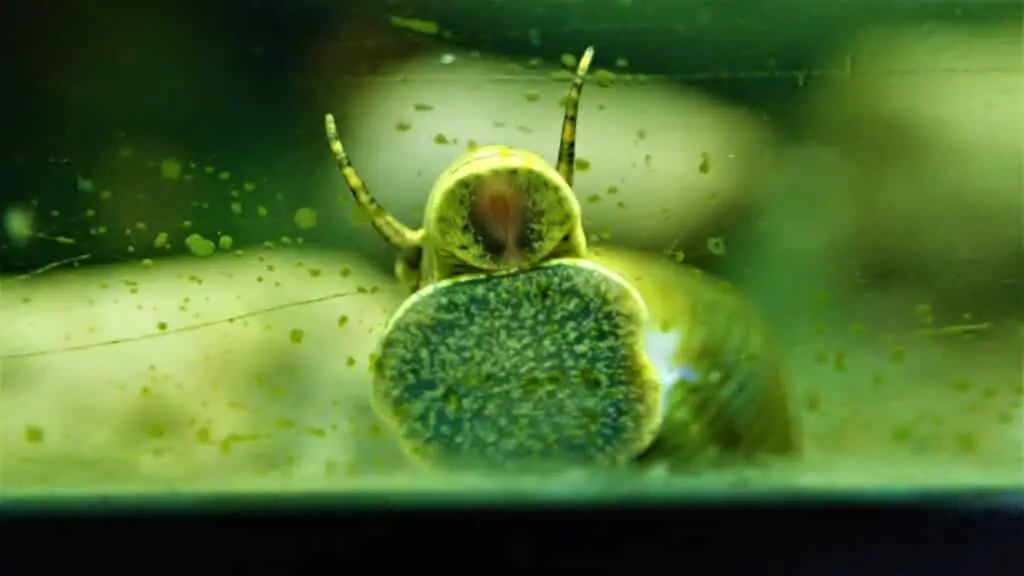
2. Crush and Feed
Another method of getting rid of snails is by crushing them and using them as food for your fish. While this method may not be for everyone, some aquarists find it to be an effective way to control small infestations while also providing a good source of protein for their fish and shrimp.
To use this method, you can crush the snails with your finger against the glass. After crushing the snails, you can feed them to your fish as a snack or part of their regular diet. This not only helps you remove the snails from your aquarium, but it also provides a nutritional boost for your fish.
It is important to note that if you have a large snail population in your aquarium, crushing and feeding them to your fish may not be enough to control their population. Additionally, this method may not be suitable for those who are squeamish or uncomfortable with handling snails.

3. Use Snail Trap
A snail trap is a useful way to remove snails from your aquarium. Simply place the trap in the tank with some bait, such as a piece of carrot, lettuce, cucumber, or zucchini, and wait for the snails to crawl in. Once they’re inside, you can remove the trap.
Some traps are designed to trap only snails, while others may also trap other invertebrates. Choose a trap that’s suitable for your needs.
Using a snail trap is an effective way to remove a large number of snails from your aquarium without harming them. However, it’s important to note that snail traps can also be dangerous for other invertebrates in your aquarium, such as shrimp, which may get caught in the trap.
Therefore, it’s essential to consider the potential impact on other species in your tank before using a snail trap.

4. Vegetable Bait Method For Removing Snails
Another natural way to remove snails from your aquarium is using vegetable bait. You can use any vegetable that’s firm enough to hold its shape and will not quickly disintegrate in water. Cucumber,zucchini, lettuce, and carrot are good options.
Ramshorn snails have a particular liking for raw carrots.
Cut the vegetable into a small piece and place it in your tank before you go to bed. The snails will be attracted to the vegetable and will gather on it. In the morning, carefully remove the vegetable with the snails attached.
Repeat this process as necessary until you have removed most, if not all, of the snails.
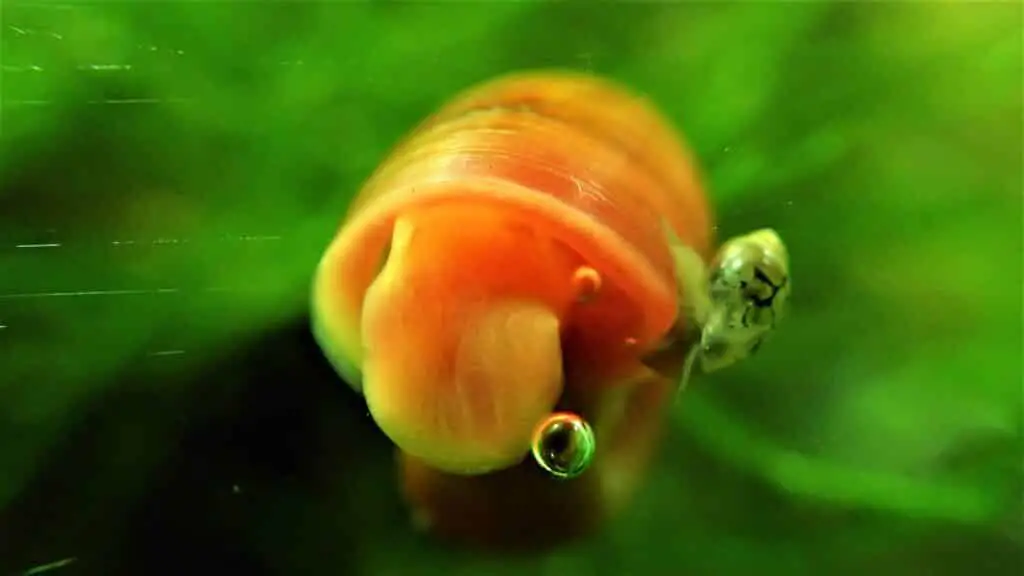
5. Chemical Treatment Removal
There are chemical treatments available that are specifically designed to kill snails in aquariums. These treatments can be effective, but they should be used with caution.
It’s important to note that chemical treatments can also harm other invertebrates in your aquarium and may have unintended effects on your tank’s ecosystem. Before using any chemical treatment, always follow the manufacturer’s instructions carefully and consider the potential risks.
One commonly used chemical treatment for snail removal is copper-based medications. These medications are effective at killing snails, but they can also harm other invertebrates such as shrimp and some types of plants.
If you choose to use a chemical treatment to remove snails from your aquarium, be sure to closely monitor the water quality and the health of your fish, shrimp and plants.
If you notice any adverse effects, such as changes in behavior or appearance, it may be necessary to stop using the treatment and seek professional advice.
In general, I would stay clear of any product designed to kill snails in a tank as it is probably not the best thing for your aquarium overall.
6. Introduce Snail-Eating Fish
Introducing snail-eating fish, such as betta fish, loaches, or pufferfish, can effectively control snail populations in your aquarium.
These fish will naturally prey on snails and help to keep their numbers in check. However, it’s important to note that snail-eating fish may also eat other invertebrates in your tank, such as shrimp.
Before introducing any new fish to your tank, research their specific needs and compatibility with your existing aquarium community. Choose fish that will not only eat snails but also thrive in your aquarium environment without harming other species in your tank.
Overall, introducing snail-eating fish can be an effective way to control snail populations in your aquarium. However, it’s important to carefully consider the potential impact on other species in your tank before introducing any new fish.
Note: most fish that will munch on snails will also munch on shrimp so keep that in mind when you add any fish to a shrimp tank.
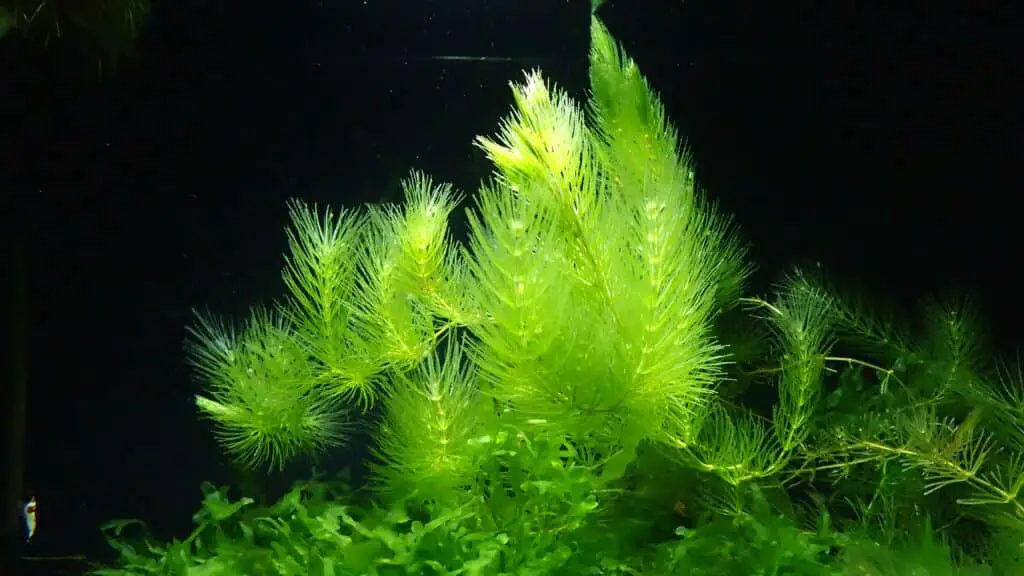
7. Inspect New Aquarium Plants
Aquarium plants are a common way for snails to enter a tank. Before adding new plants to your aquarium, it’s important to carefully inspect them for snail eggs or hitchhikers.
One way to do this is to rinse the plants thoroughly under running water and use a magnifying glass to look for any signs of snails or their eggs. You can also quarantine new plants for a few weeks in a separate tank to ensure they are snail-free before adding them to your main aquarium.
Another method for treating new plants is to give them an alum dip. This treatment involves soaking the plants in a solution of alum and water for a few minutes before adding them to your aquarium. Alum is a safe and effective way to kill snails and their eggs without harming your plants.
By inspecting new aquarium plants and taking preventative measures, such as quarantine and alum dips, you can reduce the risk of introducing snails to your aquarium and avoid the need for more drastic measures to control their population.
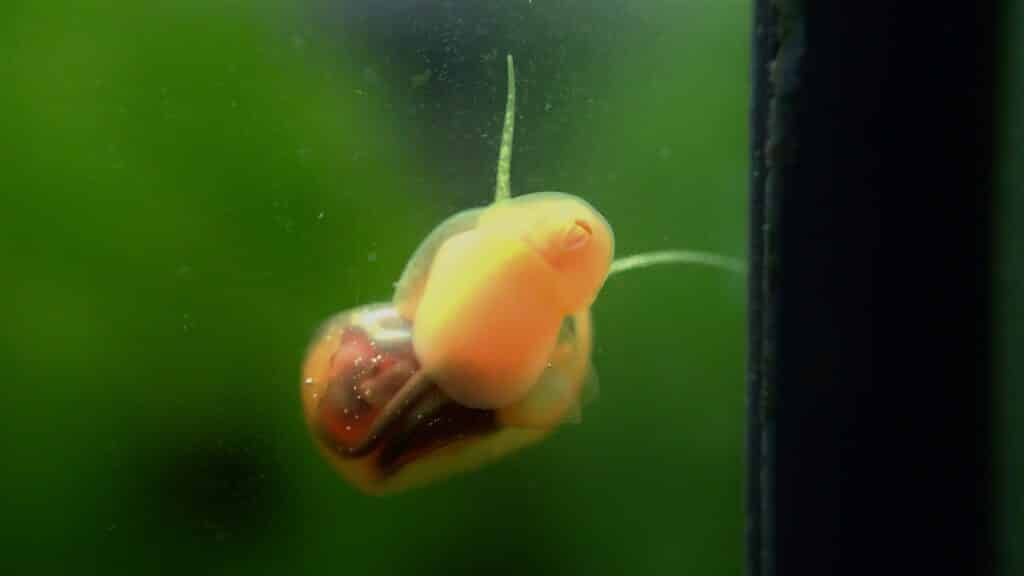
8. Avoid Overfeeding Aquarium Fish Food (Prevention)
Snails thrive in tanks with plenty of leftover fish food. To prevent snail overpopulation, it’s essential to avoid overfeeding your fish and shrimp. Only feed them the amount they can consume within a few minutes and remove any uneaten food from the tank.
This will not only help to control snail populations but will also help to maintain good water quality in your aquarium.
Overfeeding your fish can lead to excess waste and uneaten food in your tank, which can create an ideal environment for snails to thrive. By feeding your fish only what they need and removing any excess food, you can help to prevent snail populations from getting out of control.
In addition to feeding your fish the right amount, it’s also important to choose the right type of food for your fish. Some types of fish food, such as pellets or flakes, can break down quickly and create excess waste in your tank.
Avoiding overfeeding your fish is an important step in preventing snail overpopulation and maintaining good water quality in your aquarium.

Conclusion
In a nutshell, dealing with snails in your aquarium can be a bit of a shell game. But you can manage these uninvited guests effectively with a little patience and the right strategies. Remember, the key lies in a combination of manual removal, using traps, and maintaining a balanced aquarium environment.
And remember, it’s not just about getting rid of the snails. It’s about creating an environment where your shrimps can thrive without the risk of a snail takeover. So, watch your tank closely, feed your fish wisely, and scrutinize new plants.
Don’t hesitate to reach out if you’re still struggling with snails or have any other shrimp-keeping questions. Check out Aquarium Shrimp Keeping on Facebook if you can’t reach me here. We’re a community of shrimp keepers who are always ready to lend a helping hand (or a shrimp net!).
So, here’s to clear tanks, happy shrimps, and manageable snail populations.
Happy Snail Keeping!
FAQ
Q. How do you get rid of snails in a fish tank? A. You can get rid of snails in your fish tank through a combination of methods including manual removal, using snail traps, and maintaining a balanced aquarium environment that doesn’t favor snail proliferation.
Q. How do I get rid of snails in my fish tank without harming fish? A. Manual removal and snail traps are the safest methods to get rid of snails without harming your fish. Chemical treatments can be harmful to fish and should be used with caution.
Q. Why am I getting so many snails in my fish tank? A. Overfeeding and excess organic debris in the tank can lead to a snail population boom. Snails reproduce quickly when food is plentiful.
Q. How do you control snail population in aquarium? A. Controlling the snail population in your aquarium involves managing the food supply (avoid overfeeding), using snail traps, and introducing snail-eating species if appropriate for your tank.
Q. How can I get rid of snails from my aquarium humanely? A. Manual removal and using snail traps are considered humane methods. You can also use a lettuce leaf or piece of cucumber as bait to attract the snails, making them easier to remove.
